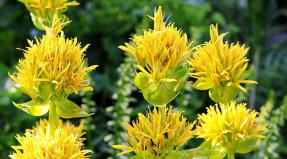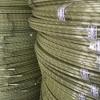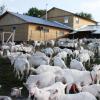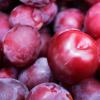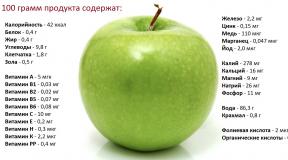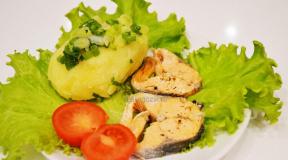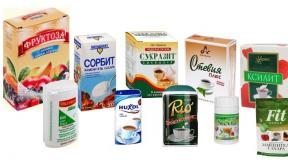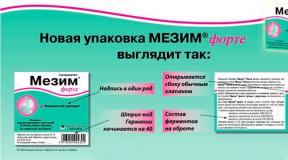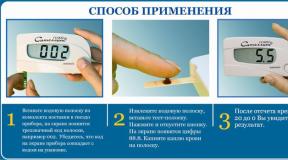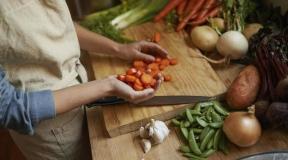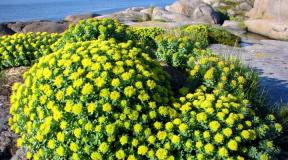Production of natural juices. Business plan - juice production: cost calculation, necessary equipment and SES requirements for the production of fruit and vegetable juices. Description of goods and services
In this article:
In terms of total apple harvest, Russia ranks 5th in the world, so juice production is an economically profitable business (in other words, because of the available raw materials).
The demand for the product is obvious, as more and more people prefer a fortified and natural drink. On the example of the production of apple juice, let us consider in more detail the features of the functioning of a mini-factory.
List of organizational moments for the creation of a mini-factory
When organizing a business for the production of natural juice, it is recommended to make a choice in favor of the legal form - LLC. Such a business format will help to easily delimit the responsibility of the founders, and attracting investors will not be any particular problem. As for the choice of the form of taxation, at the initial stage of entrepreneurial activity it is preferable to choose a simplified system (15%). Further, in the case of effective and profitable development, it would be more expedient to switch to OSNO.
In the process of organizing an enterprise, one should be guided by the following OKVED activity code: 15.32 “Production of vegetable and fruit natural juices”.

If positive results are obtained, a sanitary-epidemiological conclusion is issued.

Stages of natural apple juice production
The technological scheme for the production of apple juice is shown in the following figure.

Juice production begins with the picking of berries, in our country this happens from August until late autumn, exclusively by hand. It is noteworthy that apples for juice are harvested not only from trees, but also from the ground. So-called carrion suitable for production. At the same time, it is forbidden to use rotten, damaged and unripe fruits. The last variety of apples is characterized by a low concentration of sugars, little juice will come out of them and it will be very sour.
Ripe fruits are poured into wooden boxes and placed in trucks with the help of a loader, which will deliver ripe fruits to the plant.

Picked apples no longer receive moisture, but only lose it. That is why the juice in them becomes insignificant, but still less (every minute should count). Upon arrival at the plant, the raw materials are loaded into special bunkers (capacity up to 200 tons of apples), which are made of stainless steel.


Therefore, fruits that are in them for 24 hours will not oxidize. Further, powerful streams of water push the apples along the chutes directly into the production hall for primary cleaning.

Jets carry away leaves, branches and other debris.

Through such water trenches, fruits are delivered to the sink, because the fruits must be washed from dust and various contaminants, including chemical ones. After all, often apples are sprayed with a variety of means of protection against harmful insects.

When beautiful and juicy fruits are selected, they are sent to a crusher, where many hammers grind the fruits. The crushed apples go under the press, in which the rotating drum compresses the mixture that has entered it almost to dryness.

Thus, an opaque squeezed juice is obtained. The peel and seeds are unloaded and sent to feed livestock. 
Then the resulting juice is sent to pipes for ultrafiltration.

The unit is filled with many thin membrane tubes, which in structure can be compared with finely porous foam rubber. Juice under pressure is passed through the membrane, so even the smallest particles of pulp get stuck in the membrane, and the purified juice passes on. The resulting clear juice is sent to vacuum evaporator.

This specialized equipment is equipped with a juice and steam supply, where the liquid is heated, but not brought to a boil.

In a vacuum, the liquid from the juice evaporates along with the flavoring substances.

The juice, which is deprived of water, begins to thicken. The resulting vapor begins to condense - the water is discharged to the bottom of the tank, and the "aromatic vapor" goes up to the condenser, where it turns into a liquid.

The output is a composition that resembles thick honey in consistency. It's concentrated apple juice. Ready flavoring substances are a clear liquid that has a pronounced fruity odor. Next, concentrated apple juice is poured into barrels.
In this form, it can be stored for a long time, because the less water in the product, the more difficult it is for bacteria to multiply in it. Such juice is safely sent to other countries.

The preliminary stage of bottling the juice into bags is diluting it with once evaporated water. The concentrate is agitated as it may be subject to segregation.

Also, its sample is subjected to laboratory analysis for compliance with the content of substances to established standards.

A high percentage of dry soluble substances indicates the need to add an increased amount of liquid. The clarified juice should not contain pulp particles, so it is diluted with a small amount of liquid and look at the resulting structure.

Next, the safety of the juice is examined by placing small portions of juice in an oven with a temperature of 36 C. - optimal for the development of various microorganisms. If the juice contains bacteria, yeast or mold, then in the nutrient medium they will begin to multiply, and they can be seen with the naked eye. After obtaining satisfactory results in the laboratory, the juice can be restored, i.e. water (flavoring substances) can be added to it.

Here it is extremely important to keep the proportions and add as much water as was removed. The proportions are as follows: 6 liters of flavor is enough for 100 liters of juice. It remains to pour the finished juice into bags and attach lids to them.


Experts determine the quality of juice by the following parameters: color, taste, aroma. The finished product should be clear and not acidic, have a brown tint and apple flavor. If the sample meets the specified requirements, the batch is sent for sale.
Business plan for setting up a technological line for the production of apple juice
1. We equip the production workshop - choose a room
In a leased or acquired building, the total area of the proposed production workshop should not be less than 150 square meters. A production line is installed in a spacious room, and places are allocated for storing the initial raw material base.
It is also necessary to equip a warehouse for finished products.
The availability of household premises for employees of the enterprise should be taken care of in advance, as well as about the office. In case of limited financial opportunities, it can be located directly on the territory of the enterprise.

Compliance with legally established standards is monitored at the legislative level by the relevant services. This is especially true for the fire regime. In this regard, it is desirable to choose a room for the production workshop outside the city limits. Saving rent and utility bills in rural areas is obvious.
2. We purchase equipment for the production of juice
The average cost of a production line is 2,500,000 rubles.
Costs can be significantly reduced by purchasing used equipment.
Technological line for the production of juice in a liter package consists of:
- water treatment systems with special filters for water purification;
- washing equipment;
- tanks for mixing juice and various additives;
- homogenizer, heat exchanger and pasteurizer;
- apparatus for creating packages and bottling juice.
Often the production line is electronically controlled, which, in turn, saves on wages for plant workers.
3. We select personnel and purchase raw materials
The raw materials for the manufacture of the finished product in the amount of 35,000 liters are the following components:
- sugar - 8,000 rubles;
- fruits - 626,000 rubles;
- various additives (provided by Gost) - 4,000 rubles;
- packaging materials - 25,000 rubles;
- cardboard boxes - 7,000 rubles.
Total: 670,000 rubles.
One juice production line per shift has the ability to process about 4 tons of finished products (1,600 liters). Thus, the monthly output can be about 35,000 liter packs.
At the initial stage, 10 people will be quite enough to service one production line, not counting 5 people of the management team. An indispensable condition is the inclusion in the staff list of a technologist who will monitor the serviceability of the production line, as well as the fulfillment of a number of GOST requirements, sanitary and technical rules.
The amount of the monthly payroll of employees will be equal to 238,175 rubles:
- Basic payroll - 164,000 rubles;
- Additional payroll - 11,000 rubles;
- Payroll taxes (36.1%) - 63,175 rubles;
Basic monthly costs:
- Raw materials and additional materials - 670,000 rubles;
- Utility expenses - 10,000 rubles;
- Salary of 15 employees - 238,175 rubles;
- Costs for production needs (39% of the payroll) - 92,888 rubles;
- Rent of the building and ongoing repairs - 65,000 rubles;
- Workshop costs (50% of the payroll) - 119,088 rubles;
- Losses from marriage (4.5% of shop costs) - 5,359 rubles;
- Non-production costs (5% of shop costs) -5,954 rubles;
- Depreciation of the technological line - 8,000 rubles.
Total direct costs (p / p 1-5) -1,076,063 rubles.
Total additional expenses (p / p 6-9) - 133,042 rubles.
We calculate the main economic indicators and determine the effectiveness of the project
Planned cost (direct + indirect costs) = 1,076,063 rubles. + RUB 133,042 = 1,209,105 rubles.
Full cost of the finished product = planned cost + planned profit (20% of cost) + income tax (15% of profit) = 1,209,105 rubles. + 241 821 rub. + 36 273 rub. = 1,487,199 rubles.
The cost of processing (planned cost minus the cost of feedstock) = 1,487,199 rubles. — 670,000 rubles. = 817,199 rubles. Production cost = 817,199 rubles / 35,000 bottles = 23 rubles.
Let's determine the average market price of 1 package of juice. Assume absolute (100%) sales of manufactured products and the corresponding profit margin. Thus, the price, taking into account the cost, will be equal to: C roses. \u003d 23 rubles x 2 \u003d 46 rubles.
Calculation of indicators of profitability, profitability and production efficiency in general
Income from the sale of the finished product \u003d Retail price x Issue volume \u003d 46 rubles. x 35 000 pack. = 1,610,000 rubles. Profit from the sale of the monthly output of juice packages = Income - Planned cost = 1,610,000 rubles. - 1 209 105 rubles. = 400 895 rubles.
Monthly net profit (excluding 15% income tax) = 340,760 rubles.
Product profitability \u003d Profit from sales / Cost price \u003d 400 895 / 1 209 105 \u003d 33%.
Profitability of production \u003d Profit from sales / Cost of processing \u003d 400,895 / 817,199 \u003d 49%.
Thus, based on the above calculations, we can confidently state that the production of apple juice is an economically profitable and profitable type of business activity.
On a note!
It is also possible not to produce concentrated juice, but to purchase it. In our country, deliveries from China, Brazil, Iran, Turkey and other countries have been established. It would be preferable for a mini-factory to cooperate with intermediaries, rather than work directly with a large manufacturer.
In this case, there is no need to purchase a number of expensive installations, you can limit yourself to only tanks for mixing additives, devices for removing packages and packaging the finished product.
Possible marketing routes for apple juice
It is more expedient to deliver the first batch of apple juices to grocery stores, kiosks, retail outlets and small supermarkets. A deliberate reduction in the cost of the product for a short time will interest consumers and will allow them to appreciate the taste of the novelty.
Holding promotions or special offers will have a similar effect.
It is extremely undesirable for young companies to direct all their efforts to join large federal networks, since there is every chance that they will not be able to withstand the competition of experienced market participants. Corresponding costs can become an unbearable item in the expenditure part of the budget. Therefore, it is necessary to enter the market gradually, every month taking the following active steps to strengthen the authority:
- advertising in the media, the Internet and on television;
- carrying out an independent examination with the obligatory announcement of its results; - packaging of the product in a high-quality and bright tetrapack;
- active use of outdoor advertising, etc.
Directing efforts to a specific region will allow you to quickly get used to it and win market positions.
Then you can gradually expand the range of products, specializing in the manufacture of tomato and orange juice, multivitamin, etc. Recently, more and more consumers prefer glass containers, because they want to visually perceive the purchased product. There is also an opportunity to establish the production of premium-class juices (the so-called branded ones), when only selected raw materials are used in the production process.

Everyone knows the great benefits of natural juices. But unfortunately, not all of it can be afforded, especially if the season is “lean”. And people resort to the help of packaged juices, sincerely believing that they also contain a lot of vitamins and minerals that are so necessary for the body. However, not all juices can be called natural.
What is juice made from?
The blue screen is full of colorful juice advertisements, imposing on consumers the statement that they will drink a product of 100% quality, natural and healthy. At the same time, sometimes forgetting that bananas, pineapples, oranges and other goodies do not grow within Russian borders. This means that the juice is not made from these fruits, fresh and ripe, but from a frozen concentrate, which is brought from different countries. In all other types, natural raw materials are used.
For the production of juices, fruits with slight external damage in the form of spots or dents are suitable. But the use of rotten fruit is strictly prohibited. For if even a few of these are caught, the whole party may be spoiled.
In addition, rotten raw materials contain patulin. It is a mycotoxin that, when it enters the body, causes food poisoning. Therefore, the workers carefully select the fruits before they enter the processing.
So, to the question “What is juice made from?” there are two answers: from natural fruits or from concentrate.
Juice Basics
If in Soviet times citizens could only buy domestically produced juices with a small choice of taste, now the range of drinks will conquer any gourmet.
Fruit and berry are created on the basis of fruits or berries. There are also mixed drinks. For example: apple and grapes, peach and pear, multifruit.
Each of them, depending on a particular fruit and berry crop, has its own benefits for the body.

Vegetable. What to make juice from, if not from carrots or beets? Pumpkin, cucumber, tomato will give a huge dose of vitamins in the form of a drink. And if you mix them with fruit, you get an excellent mix that will have a healing effect and satisfy your hunger.

Herbal. For many, it will seem strange that you can make juice from grass and drink it. But it is indeed a very useful product. And yes, its uses are endless. Juice is made from rhubarb, spinach or even burdock. Celandine juice or aloe juice is widely used in folk medicine.

Classification
In fact, there are two types of juices: freshly squeezed and canned.
Freshly squeezed juice is consumed immediately, as after 30-40 minutes it will lose most of the nutrients. Such fresh juices are made in restaurants, hotels, cafes and at home. This method is not suitable for industrial production.
Canned drinks are classified into several types:
- direct spin;
- concentrated;
- restored;
- nectar;
- mors.
Direct juices
This is a freshly squeezed product that is immediately canned and packaged for further use or import. For drinks of this method of preparation, only local, fresh fruits are suitable. Water, dyes and flavorings cannot be added to such juices. Next, it is heated to about 78 ° C to kill bacteria and packaged. Direct-pressed juice is considered the most natural of all types.
concentrated juice
The concentrate is obtained by freezing, evaporation or membrane treatment. That is, water is removed from freshly squeezed juice. The concentrate is then frozen for later use.

reconstituted juice
It is made from a concentrate with the addition of water. Such drinks are also useful, since the concentrate contains all the useful substances. After dilution with water, the juice is pasteurized and packaged.
Nectar
It is also made from a concentrate, but the percentage of water in it is higher than in In addition, sugar, flavor enhancers, dyes, etc. are added to the nectar. Most often, nectar is made from fruits such as bananas, kiwi or peaches. Since they give little natural juice and it is too thick.
Morse
The store-bought product contains a large amount of water and sugar. There is much less juice in it than in other drinks.
Product manufacturing
Juice production takes place in several stages.
- Selection. The fruits are checked and selected. Rotten raw materials can spoil the entire volume of juice produced, so it is strictly forbidden to use it.
- Washing. Products are washed on special equipment to avoid getting dirt, dust and other debris into the juice.
- Cutting of raw materials. The fruits are crushed for further processing.
- Squeeze. The fruits are squeezed under pressure and juice is obtained.
- Straining. Ready juice is filtered if it should be without pulp.
- Sterilization. The juice is sterilized so that it does not spoil.
- Mixing. The necessary additives are added in the form of water, sugar or dyes.
- Package. The finished product is packed in a sealed container.

baby juice
Any mother wants to know what juice is made for children from. Is it harmful to her baby, etc. Today, special attention is paid to production technology.
All stages of making juice for children are carried out in a separate workshop, under the supervision of specialists. Despite the fact that in the process of development most of the nutrients are lost, in the future their amount is replenished.
Manufacturers often add vitamins and calcium to the finished product.

Before giving your baby juice, you should consult a pediatrician. Previously, doctors advised adding juice almost from the first days. But now this opinion is irrelevant, since it has been proven through research that the gastrointestinal tract of a child cannot yet absorb such a drink. Therefore, experts recommend the following.
- It is better to add juice to the child's diet after a year, when the body gets stronger and the stomach can process the product.
- Do not let your child drink juice on an empty stomach. The most optimal reception is considered with food or immediately after it.
- It is necessary to ensure that the daily portion of juice does not exceed 200 gr.
- When choosing juice, give preference to those made from local products.
- Do not give If the baby has an allergy, it will be very difficult to find out which fruit provoked it.
- To improve intestinal motility, you can give juice with pulp, as they have a high content of fiber and pectins.
- Choose mixed juices. Their nutritional value is many times greater than the juice from one product, because they perfectly complement each other with vitamins.
- If mom makes fresh juice at home, then it is advisable to dilute it with water in proportions of 1: 1.
Recipes
To make a full-fledged juice, you need to grind the fiber well. The elements located between its cells are released and enter the juice, benefiting the body and filling it with energy. Here are some juice recipes.
The three most popular vegetables are:
- celery 1 pc., beets 1 pc., carrots 2 pcs., watercress 3 sprigs;
- tomato 2 pcs., Bulgarian pepper 1 pc., spinach to taste;
- cucumber 2 pcs., broccoli several inflorescences, carrots 1 pc.
Vegetable juices bring great benefits to the body. They speed up the metabolism, remove toxins and toxins, improve metabolism, promote weight loss, strengthen the immune system.
Fruity do this:
- mix watermelon pulp, raspberries and pomegranate seeds and pass through a juicer;
- cut orange, lime and grapefruit into slices and place in a juicer or blender;
- cut the apple and pear into cubes, pineapple rings and mash with a blender.
Fruit juices have bactericidal, diuretic, anti-inflammatory effects. They remove radionuclides and toxins from the body, improve the performance of the immune system.
Mixed juices are made in free proportions:
- pumpkin, carrot, apple;
- carrots, orange, ginger;
- apple, spinach and carrot.
Mixed juices have a double effect in cleansing the body and fully compensate for the deficiency of vitamins.
For weight loss, using certain products, you can also make juice. The following are not juice recipes, just the ingredients. Their number can be varied.
Not all juices are suitable for people with diabetes. But there are fruits and vegetables that, in juices, help to speed up the metabolism, which benefits diabetics.
- tomato;
- beet;
- carrot;
- potato;
- pumpkin;
- Garnet;
- Apple;
- Jerusalem artichoke.
Juice selection
When choosing types of juices on the shelves of supermarkets, you should pay attention to some features.
- Choose unclarified juice with pulp. It contains dietary fiber, which helps to normalize the digestive processes.
- When deciding which juice is natural, the choice is to stop on a package labeled "straight extraction".
- Do not choose "juice" drinks, as they contain no more than 12% juice.
- It is better to stop the choice on packaged juice than on bottles.
- Natural juice cannot come from cherries, bananas, mangoes, or peaches.
Despite the benefits of natural juices, the norm of the consumed product should be observed.
Multon has been part of the Coca-Cola system since 2005. Two of its factories are located in St. Petersburg and Shchelkovo near Moscow. It is the plant near Moscow that is one of the largest plants in Eastern Europe. In total, both enterprises produce about 790 million liters per year. In addition to Dobry and Rich juices and nectars, Multon factories produce Pulpy juice drinks and Moya Semya nectars. Juice production lines have also been installed at Coca-Cola Hellenic plants in the Moscow Region, Orel, Rostov-on-Don and Novosibirsk.
The Village editors visited the Multon factory in Shchyolkovo. It has 17 production lines, its own research center, a microbiological laboratory and a logistics complex with a capacity of about 40,000 pallet places. The warehouse has its own railway line. We learned how Dobry and Rich juices are made at this enterprise.
Multon Co.
Production of juices and nectars "Dobry", Rich, "Moya semya" and juice drinks Pulpy
LOCATION: Shchelkovo city, Moscow region
THE NUMBER OF EMPLOYEES: 770
SQUARE: 11,000 sq. m
DATE OF ESTABLISHMENT: 1995



What are juice products
According to Multon analysts, Russia consumes 79 portions of juice products per capita per year. The company considers the volume per serving
0, 237 liters - this was the first, smallest bottle of Coca-Cola. According to this indicator, Russia is approximately in the middle: the inhabitants of Albania, for example, drink on average one serving per year, and the inhabitants of the Netherlands - 180-200. If we talk about tastes, then Russians most often buy apple, multifruit and orange juices.
Juice products are juices, nectars, juice drinks and fruit drinks. Juice can contain nothing but juice itself. That is why on a pack of juice, if it is one-component, there is no composition. Juices can be reconstituted (what is produced in factories), freshly squeezed (squeezed just in front of you or by your order) and direct extraction (those that have been stored for some time).
The difference between nectar is that it usually contains from 25 to 50% of the juice part. The required minimum for each fruit is set in the technical regulations: for an apple and an orange - 50%, for a peach - 40%. The juice-containing drink is characterized by a low juice content - 10%. And 15% berry juice is added to fruit drinks.











Production
Dobry and Rich are produced using the same technology. Depending on the recipe, raw materials for juices may vary - each taste has its own combination of fruit varieties. There are also differences in packaging: Dobry is bottled in Tetra Pak, while Rich is bottled in Combibloc.
Both Dobry and Rich are made from concentrated juices and purees. They are purchased from hundreds of suppliers around the world. For example, orange in Brazil, pineapple in Thailand, and tomato in Spain. There are also Russian companies among the suppliers: Multon buys concentrated apple juice in the Tambov region. For its production, fruits are sorted, separated from branches and leaves and washed. Then they are sent under the press, which squeezes the juice out of them. Then a large tank - a cistern - of freshly squeezed juice must be turned into a concentrated one. You can do this by evaporating some of the water out of it. This happens in a vacuum container: the juice is heated to a temperature of 60-65 degrees until the desired part of the water is separated. It is important not to let the juice boil so that it retains the vitamins. Then the concentrated juice is packed in aseptic bags (foil sealed bags), put into barrels and, as a rule, delivered by sea to Russia.
Why do companies use concentrated juice? Firstly, it is profitable (no need to pay for the delivery of water), and secondly, its shelf life is much longer (freshly squeezed juice deteriorates quickly, preservatives cannot be added to it, and concentrated juice can be stored for up to two years without additives).
Then the barrels arrive at the plant and go to the warehouse of raw materials and materials. Most concentrated juices need a slight minus temperature for preservation, the only exception is puree, citrus fruits and berries. They are placed in a freezing chamber with a temperature of about minus 5-18 degrees.
Before launching the concentrated juice into production, the barrels are placed in the defrosting zone, where they are heated to the desired temperature. After that, the loader driver picks up the barrel and puts it on the conveyor, which will take it to the first stage - to the blending shop.
In the blending shop, the barrel is met by an operator who checks the integrity of the package and opens the package with scissors. Then the barrel moves along the conveyor to the barrel dumper, which turns it over the container and empties it. The employee removes the bag and squeezes it out with a device similar to the one used on old washing machines. All raw materials are pumped out with the help of a pump and fed through pipes into huge blending tanks with a capacity of 1 to 10 tons. In them, with the help of mixers installed inside, it is mixed with the required amount of water. It is mined in four artesian wells with a depth of 60 to 170 meters, and before getting into the juice, it goes through five stages of purification.







To rid the juice of air, prevent oxidation of the product and exclude the reproduction of microorganisms, it is pasteurized and deaerated. It happens like this: first, the juice is heated to 55-60 degrees, passing it through the first section of the tubular heat exchanger. After the juice enters the deaeration, during which all air bubbles are completely removed from the juice. Then thick juices (for example, orange and peach) are homogenized, that is, they are passed through narrow holes to make the consistency homogeneous and avoid lumps. Clarified juices, bypassing this process, immediately go to the second stage of pasteurization. In this case, the juice in the stream is heated to 85-90 degrees for 30 seconds, and then quickly cooled. As a result of such heat treatment, according to employees, the useful substances and properties of the product are preserved.
Next, the so-called aseptic pumping awaits the juice: with the help of a pump, the juice is sent through sterile and sealed pipes to the second floor in the bottling shop. Here everything is also fully automated and sterile. Before the juice enters the bag, the packaging material undergoes temperature treatment and, following the peroxide bath, enters the sterile chamber. Until the moment the package is filled with juice and glued, it does not come into contact with external air - everything happens inside the equipment. Then the finished box is labeled and the lid is glued.
At each stage of production, factory employees take test samples, which are examined in the laboratory. New tastes are created in the research center.
Then the finished packages are put into corrugated boxes, from which a set of products is formed, ready for transportation.









The post has been changed:
How to organize a mini juice factory
The food industry is considered one of the most promising business areas. Juice production does not fall into the category of essential goods, but the demand for them remains extensive. Commercial activities for their manufacture and operation can be a very profitable undertaking, it is only important to foresee all the subtleties and main points of the production process in advance.
Brief business analysis:
Business setup costs: 2.2-2.6 million rubles
Relevant for cities with a population: no limits
Situation in the industry:high competition
The complexity of organizing a business: 3/5
Payback: 1-1.2 years
Business Relevance
In the 1990s, imported juice products were represented on the Russian markets to a greater extent, only 10% of goods in this category were made from raw materials grown in the country. Until now, the Russian producer remains very dependent on raw materials, many popular vegetables and fruits either do not grow in the country at all, or are grown in insufficient quantities.
In this case, concentrates come to the rescue, products that are imported from other countries. The ban on the import of raw materials from the EU countries, adopted in 2014 by the Russian government, aggravated the situation, but at the same time it gave impetus to an increase in the volume of vegetables and fruits grown domestically. The most favorable for this is the Southern region.

At the moment, more than 2,000 names of juice products of a domestic manufacturer are available to the end consumer. This growth is due to the desire of society for a healthy lifestyle. Natural juices and products with a high content of nutrients are at the peak of popularity today. Rosstat provided information that says that the production of fruit and vegetable juices increased by 25% compared to the previous year. This is a consequence of the import substitution program.
Manufacturers are interested in supporting small and medium-sized businesses that are able to ensure the production process from start to finish. Their prerogative is inexpensive and high-quality raw materials, so they will assist farmers and enterprises in every possible way, which will be able to assist in logistics at all stages of production: from harvesting and processing, and ending with the sublimation of finished concentrates for the manufacture of finished products available for consumption by the end consumer .
We can say that the production of juice products is a demanded, low-competitive business with broad prospects and opportunities for its development.
Currently, the following types of juice products are produced in the Russian Federation:
- natural- an unfermented product, made from various types of raw materials, does not contain chemical elements, with the exception of sorbic and ascorbic acid, within acceptable limits. There are illuminated and non-illuminated.
- Juices with added sugar. They are made from sour fruits with the addition of sugar syrup. One of the manufacturing options is blending - adding an additional juice to the main juice. This is done to obtain improved taste.
- Concentrated- they are obtained from ripe, carefully selected fruits or vegetables, from which moisture is partially removed mechanically.
- nectars- they are made by mixing fruit or fruit puree with water and sugar syrup, the percentage of which can reach 50%.
- Dry juices- a full-fledged alternative to natural ones, produced as a result of freeze-drying. It is used in cooking as a basis for kissels, compotes, fruit drinks.

The structure of fruit juice production depending on the taste preferences of consumers is as follows:
- 24% - apple nectar;
- 23% - multifruit juice;
- 19% - orange;
- 14% - peach;
- 13% - fruit mixes;
- 7% - the rest.
Now there is a pronounced increase in production volumes of domestic juice producers.
How to open a juice production workshop - business organization
In order for the production of juices to start making a profit, it is necessary to think over a lot of organizational issues, the first of which is the state registration of the enterprise. Juice production is a very costly project, and even at the initial stage, you need to think about attracting capital from outside investors. If you immediately register an organization in the form of an LLC, this will simplify many working moments in the future.
You will receive the legal right to produce juice products only after the entire range, which is planned to be launched for mass production, has been certified. This means that part of the preparatory operation will take place in parallel. Only after certification in the bodies of Rospotrebnadzor can one proceed to hiring personnel and mass production of products.
But let's take a closer look at the main organizational issues that should be carefully worked out on the way to the formation of a juice business. The information is presented in the following table.
Table: the main stages of organizing a juice production enterprise
| Stage name | Characteristic |
|---|---|
| Training | Careful study of relevant information, market analysis, strategy creation, search for hidden obstacles and ways to bypass them. |
| Product range development | Development of a recipe for produced juices in accordance with GOST or TU: type, taste, shelf life, additives. For a successful undertaking, the list of produced juices should include at least 10 positions. |
| Finding a production facility | Purchase or lease according to the financial capabilities of the company. |
| Purchase of equipment | Search for the necessary equipment, commissioning. |
| Purchase of raw materials | Search for suppliers, development and signing of supply contracts. |
| Search and recruitment of personnel | Search for specialists needed during the production process. You will need a technologist, 2-3 operators for the production line, a sorter, a storekeeper, a loader, a sales manager, an accountant and a cleaner. As your business expands, you will need to hire more people. |
| Advertising campaign | It is carried out to promote business. |
| Search and attraction of investors | Necessary for organizing a competitive business. |
| Business registration | Registration of an enterprise in the form of an LLC or individual entrepreneur in the tax authorities, verification in state bodies, obtaining relevant documentation. |
| Mass production | Release of products for the mass consumer. |
Workshop room
The area of the acquired or rented premises should be 150-200 sq.m, no less. A production line, a laboratory, warehouses for storing raw materials and finished products, and household rooms will be located here. In such a territory, you can easily place the necessary equipment in compliance with all sanitary and fire safety standards. In order to save money, the main office can be located directly on the territory of the workshop.
The premises must comply with the requirements of the Decree of the Government of the Russian Federation of April 25, 2012 "On the fire regime", according to which the responsible person undertakes to conduct timely briefings for personnel on fire safety, place plates with numbers to call the fire brigade in each production room, provide smoking areas for personnel etc.

Raw material supply channels
The most profitable and economical option is an agreement with farms engaged in the cultivation of vegetables and fruits. Most popular crops grow only in the southern regions of Russia, so it is advisable to develop activities there. If the offered volumes are not enough, it is possible to negotiate the supply with foreign companies. Concentrates are supplied from Iran, Brazil, Turkey, China. You can consider the proposals of intermediary companies (Doehler, Cargill).
For the production of very popular nectars in our country, you will need:
- concentrated juice or fresh raw materials;
- additives, if they are provided for by the requirements of GOST or TU;
- sugar;
- water.
In addition to the production of the juice itself, you should take care of the packaging in which the finished product will be produced. The most popular are two types of packaging material:
- tetra-packs - cardboard containers into which ready-made juice is poured. This container is more convenient, cheaper than glass, some useful substances are not destroyed in it.
- Glass containers - presented in the form of bottles of 0.5 and 1 liter, and jars of 1, 2, 3 liters.

The conveyor line will match the selected package. To reduce costs, it is recommended to order in bulk.
Initially, it is worth taking care of the development of the recipe. To do this, find an experienced technologist, because the future of your business depends on a well-developed juice recipe. This person, based on the strategy and available investments, will describe the range and production scheme, and advise the optimal equipment for this. Direct-pressed juice is not the best solution for a novice businessman, since the technology for its release is expensive. It is better to start with nectars made from concentrates.
The production of natural juices is a rather laborious and lengthy process. Fresh raw materials (for example, let's take apples) arrive at the plant, where they are unloaded into special stainless steel bunkers with a capacity of up to 200 tons. From it, powerful water flows direct apples for primary purification. At the sink, apples are doused with cold water to remove dust, dirt and chemicals used to treat fruit to protect against pests.

Next, sorting takes place, here you need to carefully select spoiled fruits, because even one rotten apple can ruin the entire batch. After that, the raw material enters the crusher, where it is carefully crushed. The ground mixture enters the press, where, under high pressure, a rotating drum squeezes it almost dry.
The resulting juice goes to ultrafiltration, where the smallest crushed particles are retained. Further, the evaporation process takes place in the vacuum compartment, where the juice is heated, but not brought to a boil. Excess moisture leaves, concentrated juice begins to thicken. The resulting composition is poured into large containers. It resembles thick caramel, in this form it can be stored for a long time.
The process of making juice from a thick concentrate is as follows:
- the initially concentrated substance is heated to 100°C;
- then it is cooled to 25-30°C;
- add water, the amount of which is indicated in the recipe;
- if necessary, add other substances according to GOST or TU.

The product obtained as a result of working with a concentrate is not inferior in quality to direct-pressed juice, but the costs for this method are much lower. Next, the juice is poured into containers and goes to the technological control department, where specialists check the parameters of the resulting product.
Necessary equipment
A set of equipment for making juices costs about 4 million rubles. It includes:
- centrifugal pump;
- long-term pasteurization tank with a volume of 630 liters;
- dispenser of liquid products into containers;
- pasteurization kit;
- installation for applying self-adhesive labels on containers;
- filtration equipment.

Suppliers undertake to carry out commissioning work directly in the process of installation at the enterprise, conduct personnel training, and provide a guarantee for 12 months from the date of purchase.
Modern equipment requires minimal human involvement, such automation of production can significantly save money on hiring staff.
Business registration
If you have not registered your business with the relevant authorities, all activities are considered illegal.
Since production is related to the manufacture of food, visiting various authorities should not shock you. You will need to contact the following organizations:
- fire service to obtain the necessary documents for the production premises;
- tax authorities for registration of LLC or IP;
- in organizations registering a trademark.
In addition, each employee must undergo a mandatory medical examination in order to obtain a sanitary book.
A package of necessary documents for product certification
To certify your juice products, you need to familiarize yourself with the following laws and regulations:
- Federal Law No. 178 - regulations for juice products;
- State standards for juices;
- Federal Law No. 29 - on the requirements for the quality of manufactured products;
- Federal Law No. 52 - sanitary and hygienic requirements;
- Requirements for the hygienic safety of manufactured products.
In any case, you need to contact a lawyer to clarify the information and the list of required documents, because in each case the list may differ.

What you need to start juice production at home
To produce juice at home, you do not need to pay rent, insurance premiums, etc. You can start making natural juices, for which you only need a high-quality juicer, raw materials and containers. However, the shelf life of such products cannot exceed 1 month.
You will be able to mix different fruits, getting new, never seen before flavors. Creating fortified drinks is important to follow simple rules:
- use only mature and high-quality products;
- carefully clean the fruit from the core and spoiled places;
- in the process of cooking, use enameled, glass or wooden utensils.
Ready juices must be boiled, allowed to stand, so that the remaining pulp can be removed and passed through a fine-grained filter. It is necessary to pour the product into sterilized containers almost to the very top so that the amount of air trapped inside is minimal.

Marketing and distribution channels
Without carefully crafted marketing, the success of a business hangs in the balance. While no one knows about your brand, it will take a lot of effort and investment to advertise a quality product. The following advertising campaigns can help you promote your business:
- providing sales agents with brochures and posters for placement at retail points of sale;
- official website of the enterprise;
- placement of advertising banners in social networks;
- promotions in stores and supermarkets;
- advertising on radio and television.

You can sell products in the following way:
- agree on delivery to recreation centers, cafes and canteens;
- through grocery stores, kiosks and supermarkets;
- supply to entertainment centers, sports and shopping complexes;
- engage in retail sales in amusement parks;
- organize a juice bar at city holidays and in crowded places.
franchise business
This model has both significant advantages and significant disadvantages. The positives include:
- the ability to start production without wasting money on advertising, since the brand is already known to the consumer;
- a recognizable brand inspires more confidence;
- minimal risks, franchising projects are more successful than new ventures, according to statistics, 86% of entrepreneurs were able to promote production by initially buying a franchise;
- loyal lending conditions, since the franchisor is interested in your prosperity and will be able to act as your guarantor in the bank;
- such projects pay off quickly.

However, there are also pitfalls, namely:
- total control of the business by the franchisor;
- the need to act according to established rules;
- penalties for non-compliance with the terms of the contract.
Starting a franchise business or not is a matter that requires careful thought and fully considered decisions.
Business costs and payback
Before organizing the production of juice products, it is worth calculating the possible costs for the purchase of equipment, the purchase or rental of premises, and other significant points.
For one working shift, the production line is capable of producing from 500 to 6000 liters of finished juice. Let's take an indicator equal to 1600 liters. Thus, in a month, or 22 working shifts, 35,000 liters of finished juice or 35,000 liter packs can be produced.
For calculations, take into account the cost of raw materials, which includes the cost of sugar, fruits or vegetables, additives provided for by GOST, packaging material and cardboard boxes.
The payroll for employees of the enterprise should be included in the calculations.
Direct monthly expenses include:
- spending on the purchase of raw materials and additional materials;
- Payment of utility services;
- employee salaries;
- production needs;
- rent of premises and current repairs.
Additional costs include:
- workshop costs;
- non-manufacturing expenses;
- losses from marriage;
- production depreciation.
If you sell a liter package of juice for 75 rubles / piece. you can get it:
35,000*75=2,625,000 rubles per month.
It is worth subtracting the monthly expenses from the obtained indicator, after which it will become obvious how profitable your juice production business is.
In order to organize a plant that will produce natural juice, you will need four main components:
- factory room,
- conveyor line,
- raw material,
- packaging for bottling finished juice.
You can also open a fresh bar in parallel.
Organizational and legal issues in the conduct of this business
When organizing the production of natural juice as a business, during registration, preference should be given to the legal form of an LLC. It is when using an LLC that it will be much easier to delimit the responsibility of the founders and it will be much easier to attract investors to your business.
In the process of organizing such an enterprise, paragraph 15.32 “Production of vegetable and fruit natural juices” must be indicated as the main OKVED activity code. The form of taxation should initially be chosen as "simplified" (15 percent), but with the successful growth of your company, it is possible to switch to OSNO.
List of regulatory documents for regulating the activities of a company producing juice products:
- - "On Protection of Consumer Rights" dated February 7, 1992 under the number 2300-1;
- - "On the safety and quality of food products" dated January 2, 2000 under the number 29-f3;
- - "On the sanitary and epidemiological well-being of the population" dated March 30, 1999 under the number 52-f3;
- - "Technical regulations for the production of juice products from vegetables and fruits" dated October 27, 2008 under the number 178-f3;
Sanitary norms and rules
For the brewing and non-alcoholic industries, there are sanitary rules, under the number 3244-85 04/09/1985 of the Ministry of Health of the USSR (list of requirements for production).
The maximum allowable amount of chemicals that are released from raw materials and come into contact with food are described in GN 2.3.2.972-00 of the Ministry of Health of Russia (requirements for product packaging and containers).
Requirements for observance of hygienic safety and nutritional value for food products SanPiN 2.3.2.1078–01 11/14/2001 of the Ministry of Health of the Russian Federation with additions.
Juice production activities can only be organized in accordance with the requirements of GOST or according to the technical conditions developed at the enterprise itself.
For each nomenclature unit of production, it will be necessary to obtain an appropriate certificate of conformity from Rospotrebnadzor.
Premises for the organization of production
On the area planned for production, one production line must necessarily fit, it is necessary to choose a suitable place for storing raw materials and provide for a warehouse for storing finished products. There should also be living quarters. In order to save money, the office can be located directly on the territory of the plant.
The premises of the workshops must necessarily comply with all fire regulations of 04/25/2012.
It is better to place your plant outside the city limits. There will be less rent and utility tariffs, respectively, and for water, which will be needed for production in huge quantities. With regards to the area required for production, at first 150 sq.m. will be enough for you.
Juice production equipment
The cost of a juice production line can vary from 2 to 6 million rubles.
The price will depend on the country of manufacture, the year of manufacture and the period of operation (this is when buying used equipment).
Juice production line consists of:
- - water treatment system, it includes several special filters for water purification;
- - pumps and filters for finished products;
- - tanks for mixing and various additives;
- - homogenizer;
- - pasteurizer;
- - heat exchanger;
- - tank for aseptic storage;
- - apparatus for pouring juice into packages;
- - washing equipment;
- - apparatus for the output of packages and their sealing in a container.
The control process of equipment that produces fruit and vegetable juices is usually computerized - this is a good economy.
Raw materials for the production of reconstituted juice:
- - juice concentrate;
- - water;
- - sugar;
- - additives, if the data are provided for by GOSTs and TUs (for example, enrichment of juices with vitamins).
Typically, the concentrate is imported into the country from China, Brazil, Iran, Turkey and other countries. Of course, for a not very large company it would not make sense to work directly with the manufacturer, it would be much easier to work through third parties, intermediaries. There is also the possibility of an agreement with foreign suppliers of raw materials (Cargill, Doehler).
Concentrated juice is usually made in the country where the fruit is grown by evaporating water from it. The resulting mass, resembling jelly, is packed into containers and then exported. Already at the factory, the concentrate is unpacked and restored to the composition of fresh juice, adding water and the necessary useful trace elements. The shelf life of finished products is 9-12 months.
It should be noted that in addition to various natural juices, there are also juice-containing drinks and various nectars - these are the main types of products that are manufactured at juice factories. Raw materials are always used the same, but the proportion of dry concentrate will be different everywhere. 100% reconstituted juice has the same composition as freshly squeezed juice, but in nectar the water level can be about 75% of the total volume. Juice-containing drinks contain the smallest part of the juice (up to 10 percent), and they also contain a high percentage of chemical additives and flavor enhancers.
But you should not form your assortment only from juice-containing drinks - in terms of taste, they are very inferior to nectars and juices. For a young company, the best option would be to create a line of 10-12 different flavors, where 30 percent will be natural reconstituted juice, and the remaining 70 percent will be nectars and juice-containing drinks, of which there will be two or three types.
Packaging and containers for juice
The bulk of all juices are currently sold in TETRAPAK packaging, which is more practical than glass containers, and in addition, the use of such packaging allows you to save some vitamins that can be destroyed under sunlight. Of course, it is no secret that it is simply impossible to store this type of product under the sun, but no one can give you guarantees that the goods will be treated properly at retail outlets. In addition, glass containers weigh more and are very fragile, which can cause serious problems when transporting products. And if you opted for tetrapak packaging, then the conveyor line will need to be equipped to work with such packaging. In other matters, you can choose Tetra Rex, Pat or Doy Pak. Juice with a bottle capacity of 1 liter is packed in boxes of 12 or 15 bags, it all depends on the form of packaging. So you need to take care of the cardboard from which the container will be made.
Recruitment
The total number of employees at the initial stage, if only one line is launched, should not be more than 30 people, taking into account the management team.
The key link in the production of juices is the technologist. He is engaged in setting up the plant line according to the requirements of GOSTs and TUs. He is also involved in testing equipment for malfunctions and the composition of the final product for compliance with all technical and sanitary rules.
As a result, in order to start the production of vegetable and fruit juices, you will need this necessary minimum:
- - one production line for the production of juice in liter packaging (this format is the most popular).
- - materials for packing;
- - 1 barrel of concentrated juice for each of the planned tastes (1 barrel weighs 250 kg).
- - cardboard boxes for ready-made packages with juice.
One juice production line produces about 2 tons of finished products.
Considering that the concentrate to the state of freshly squeezed juice must be diluted in a ratio of 1/10, then if there are 10 flavors in production, about 25 thousand packages of a ready-to-sell product can be produced. This amount can be increased many times over if the main share falls on the production of nectar juices.
At first, finished products can be delivered to pavilions, kiosks, small supermarkets, shops located in residential areas or some grocery stores, unless of course they are in your city. It is better to start considering entering large networks, for example, federal ones, only after a couple of years of successful sales, since young companies:
- - can easily not withstand the competition;
- - a ticket to enter may not be affordable (often you need to pay for a place a year in advance);
- - it is unlikely that a beginner can count on an advantageous place.
Promotion of your business should take place with various promotions (it will be cheaper). Gifts to point owners and sellers, so that they are more willing to sell your products. It will also be possible to launch advertising on the Internet, paying attention also to the region of production.
Sep 15, 2016 Sergei

